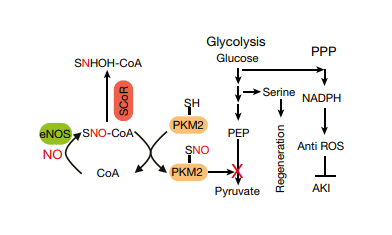Researchers at the Case Western Reserve University School of Medicine and the Cleveland University Hospital Medical Center have discovered a way to enhance kidney self-repair. This is a way to save the damaged kidney by reprogramming the self metabolism.
The glycolysis process converts glucose into energy, and new research suggests that when tissue is damaged, the body switches this pathway to repair damaged cells. When cells break down fat, sugar, and protein into glucose, all three substances are first converted to intermediates and then into the mitochondria. Researchers report that when a tissue is injured, such as a kidney tissue, the body converts glucose into another new molecule and then takes the cell toward repair.
The key substance controlling the path of glucose is called PKM2 protein. Inactivation of PKM2 resulted in a significant increase in cell repair and a reduction in energy production. After the disease or injury, the animal attempts to disable the PKM2 protein in order to transfer the glucose to the repair pathway. In the experiment, after the inhibition of amplification, the kidney damage of mice has a more obvious repair effect.
One of the key molecules in tissue repair, nitric oxide (NO), is a well-known umbrella for kidneys and other tissues. It is also an active component of the heart drug nitroglycerin, which has been thought to play a role in dilating blood vessels. However, in the new study, the team found that NO adheres to coenzyme A, a key molecule involved in glycolysis and energy production, and binds and transports NO to many different proteins, including PKM2 to shut them down. This is the idea that kidney cells decide to “repair” or “capacity”.
In addition to discovering that the addition of NO to PKM2 can activate repair, the team found that another protein called AKR1A1 is responsible for removing NO from PKM2 and re-activating a powerful energy production process. After the healing is completed, this reversal allows glucose to be efficiently converted into fuel, which is why the body is able to regain the ability to perform strenuous exercise after a major illness is restored.
When the researchers inactivated AKR1A1, the kidneys were in a repair mode and were highly protected against disease.
EIAAB SCIENCE INC, WUHAN has developed PKM2 protein, antibody and ELISA kit, AKR1A1 protein, antibody and ELISA kit.








